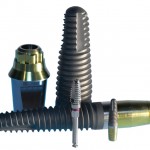
Dental implants are often used oral rehabilitation following treatment for head and neck cancer. While surgery is the most common treatment for this group of patients this is frequently combined with radiotherapy. As radiotherapy reduces the vascularity and regenerative ability of bone tissue it can impact on the survival rate of implants.
The aim of this review was to compare the success rate of implants placed in irradiated human bone tissue with that of implants placed in non-irradiated areas.
Methods
Searches were carried out in the Medline, Cochrane and Embase databases. Randomized controlled trials, prospective, and retrospective studies with a minimum of 5 patients undergoing radiotherapy, receiving dental implants and reporting implant survival data were considered. Only English language studies were included.
Two reviewers selected studies and assessed study quality. Survival rate was assessed using Kaplan-Meier analysis and risk ratio (RR) with a 95% confidence interval (CI) was used for dichotomous outcomes.
Results
- 40 studies (1 randomised, 18 prospective, 21 retrospective) involving a total of 2220 patients were included.
- 13 studies identified the number of implants placed, 2185 in the mandible and 796 in the maxilla.
- A total of 9231 implants were installed in irradiated and non-irradiated participants
- Follow-up periods ranged from 1-276months
- Irradiated patients received doses ranging from 10 to 145 Gy, the average time between radiotherapy and implant placement was 11.82 months (range 1-240 months). 3 studies reported on patients for whom radiotherapy was performed after implant installation.
- Of 5562 implants placed in irradiated patients, 862 (15.49%) were classified as failures, compared with a failure rate of 5.20% (191 out of 3669) in non-irradiated participants.
- Kaplan-Meier analysis indicated a survival rate of 84.33% during the period from 0 to 192 months for irradiated patients.
- Meta-analysis (26 studies) using random effects model suggests a statistically significant increased risk of failure in irradiated patients RR=2.63 (95%CI; 1.93 – 3.58; P<.001 I2=56%)
Conclusions
The authors concluded:-
Dental implants placed in irradiated areas have a lower survival rate than those installed in non-irradiated areas, and possible complications are a high-risk threat throughout the life of these patients. Close monitoring is necessary to avoid complications and reduce the chances of failure.
Comments
While the reviewers have searched 3 major databases restricting their included studies to those published in English may mean that some relevant studies have been excluded. The authors have also chosen to include both pro- and retrospective study designs and retrospective designs are more prone to bias. Details regarding the selection process and quality assessment of the included studies is also limited and no information on the authors quality assessment of the individual studies is provided to inform the reader. A sensitivity analysis comparing the relative risk of failure between the pro- and retrospective studies would have been helpful. Consequently while this review provides an indication of implant survival rates in this group of patients the findings should be interpreted with caution as given the high proportion in retrospective studies there is a likelihood that survival is over estimated and the risk of failure underestimate.
Links
Primary paper
Smith Nobrega A, Santiago JF Jr, de Faria Almeida DA, Dos Santos DM, Pellizzer EP, Goiato MC. Irradiated patients and survival rate of dental implants: A systematic review and meta-analysis. J Prosthet Dent. 2016 Jul 23. pii: S0022-3913(16)30195-0. doi: 10.1016/j.prosdent.2016.04.025. [Epub ahead of print] Review. PubMed PMID: 27460315.

What is the survival rate of dental implants in irradiated patients? https://t.co/SzidBsnSVa
Dental Implants: survival rate in irradiated patients https://t.co/SzidBsnSVa
Dental implants placed in irradiated areas have a lower survival rates https://t.co/SzidBsnSVa
Review suggests 85% of dental implants in irradiated areas survive at 16 yrs https://t.co/SzidBsnSVa
Increased risk of dental implant failure in irradiated patients RR=2.63(95%CI;1.93-3.58) https://t.co/SzidBsnSVa
Don’t miss- Dental Implants: survival rate in irradiated patients https://t.co/SzidBsnSVa